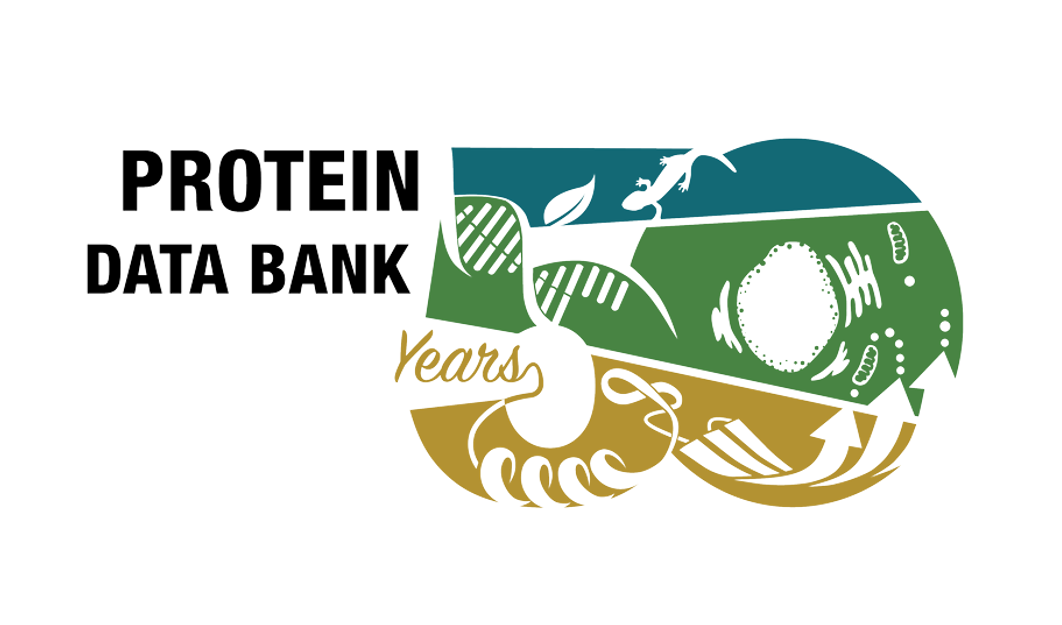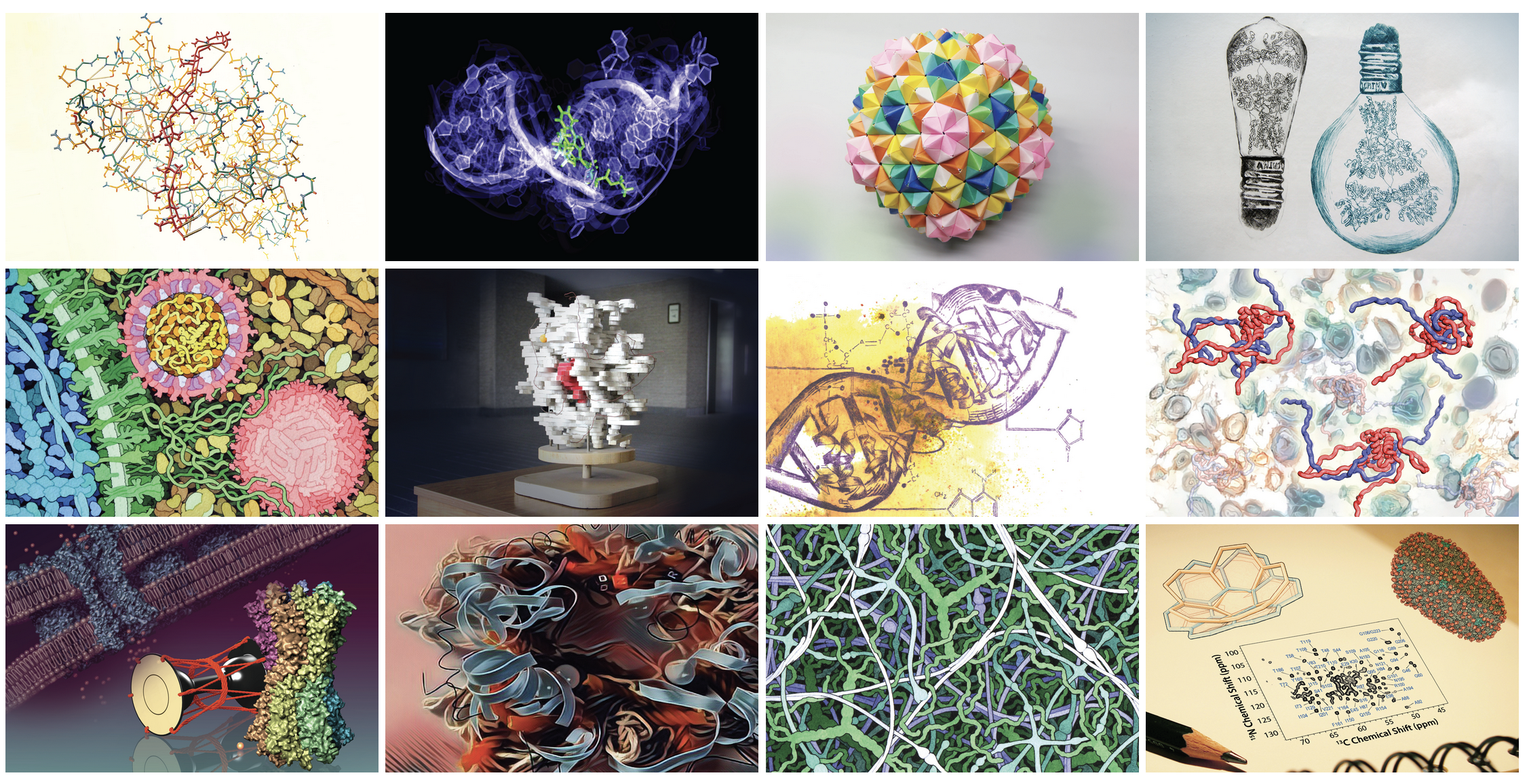
In the late 1950s, scientists began to decipher the 3D shapes of proteins at the level of individual atoms. The implications of these new structures for science inspired the new field of Structural Biology. Imagining the potential research enabled by archiving and sharing data from these experiments moved the scientific community to action.
In June 1971, a symposium on Structure and Function of Proteins at the Three Dimensional Level was held at Cold Spring Harbor Laboratory, USA. With its lively conversations, debates, and planning for the future, that meeting defined the beginning of the Protein Data Bank (PDB) as an archive for the experimentally determined 3D structures of biological macromolecules. Later that year, the PDB archive was established as the first open-access, digital resource for biology.
After starting with just seven crystal structures, the archive today contains and supports online access to ~175,000 biomacromolecular structures determined via macromolecular crystallography, nuclear magnetic resonance spectroscopy, and 3D electron microscopy by researchers from around the world. From its inception, the PDB has embraced a culture of open access, leading to its widespread use by the research community. PDB data are used by hundreds of data resources and millions of users exploring fundamental biology, energy, and biomedicine.

In recognition of the importance of long-term preservation of biostructure data, the Worldwide Protein Data Bank (wwPDB) partnership was established in 2003 to manage the PDB archive and ensure that the PDB is freely and publicly available to the global community. It consists of organizations that act as deposition, data processing and distribution centers for PDB data. Current members include the RCSB Protein Data Bank, Protein Data Bank in Europe (PDBe), Protein Data Bank Japan (PDBj), and Biological Magnetic Resonance Data Bank (BMRB).
To commemorate and celebrate 50 years of the PDB, the wwPDB is organizing multiple events in 2021 (http://wwpdb.org/pdb50).
The inaugural symposium will be held May 4–5, 2021 in a virtual event hosted by the American Society for Biochemistry and Molecular Biology. This celebration of the founding of the PDB as the first open access digital data resource in biology will host speakers from around the world who have made tremendous advances in structural biology and bioinformatics.
Speakers will include:
-
Eddy Arnold - Rutgers, The State University of New Jersey
- Using HIV-1 reverse transcriptase structures to guide anti-AIDS drug discovery
- Using HIV-1 reverse transcriptase structures to guide anti-AIDS drug discovery
-
Helen M. Berman - Rutgers, The State University of New Jersey and University of Southern California
- The evolution of the Protein Data Bank as a community resource
- The evolution of the Protein Data Bank as a community resource
-
Thomas L. Blundell - University of Cambridge
- A personal history of five decades of structural biology and the PDB: From the X-ray structure of 2-Zinc insulin hexamer in 1970 to Cryo-EM structures of DNA-PK from DNA repair in 2020
- A personal history of five decades of structural biology and the PDB: From the X-ray structure of 2-Zinc insulin hexamer in 1970 to Cryo-EM structures of DNA-PK from DNA repair in 2020
-
Alexandre M. J. J. Bonvin - Utrecht University
- Solving 3D puzzles by integrative modelling using PDB structures
- Solving 3D puzzles by integrative modelling using PDB structures
-
Stephen K. Burley - Rutgers, The State University of New Jersey and University of California San Diego
- Impact of structural biologists and fifty years of Protein Data Bank operations on drug discovery and development
- Impact of structural biologists and fifty years of Protein Data Bank operations on drug discovery and development
-
Wah Chiu - Stanford University
- Cryo-EM of biomolecules at Ångström resolutions
- Cryo-EM of biomolecules at Ångström resolutions
-
Johann Deisenhofer - University of Texas Southwestern Medical Center
- 50 years of PDB — from crazy idea to treasure
- 50 years of PDB — from crazy idea to treasure
-
Juli Feigon - University of California Los Angeles
- Structural biology of telomerase
- Structural biology of telomerase
-
Angela M. Gronenborn - University of Pittsburgh
- Integrated BioNMR — getting by with a little help from my friends
- Integrated BioNMR — getting by with a little help from my friends
-
Jennifer L. Martin - University of Wollongong
- Science, crystallography, reflections: A journey with the PDB over 35 years
- Science, crystallography, reflections: A journey with the PDB over 35 years
-
Stephen L. Mayo - California Institute of Technology
- Antibody small molecule conjugates with computationally designed target binding synergy
- Antibody small molecule conjugates with computationally designed target binding synergy
-
Zihe Rao - ShanghaiTech University and Tsinghua University
- Structural insight into SARS-CoV-2 replication and transcription complex (RTC)
- Structural insight into SARS-CoV-2 replication and transcription complex (RTC)
-
Hao Wu - Boston Children's Hospital and Harvard Medical School
- "Speck"tacular inflammasomes: structures of supramolecular complexes in innate immunity
The online sessions will take place between 11 a.m. – 4:30 p.m. EST each day. The event will be recorded and made available to registered participants after the meeting. Attendees are encouraged to participate in the virtual poster session and exhibition hall. Students and postdoctoral fellows will be eligible for poster awards. Register today: https://www.asbmb.org/meetings-events/pdb50
This international symposium will be followed by regional meetings in the US (including the ACA Transactions Symposium), Europe and Asia to promote participation and education from students and early-career scientists from every continent. At each meeting, outstanding international leaders will showcase the advances in structural biology and the impact of the PDB on fundamental biology, biomedicine, bioenergy, and biotechnology.





Join the FEBS Network today
Joining the FEBS Network’s molecular life sciences community enables you to access special content on the site, present your profile, 'follow' contributors, 'comment' on and 'like' content, post your own content, and set up a tailored email digest for updates.